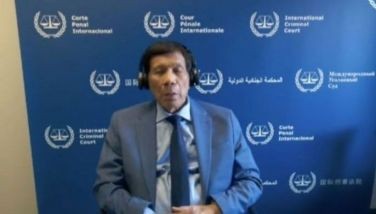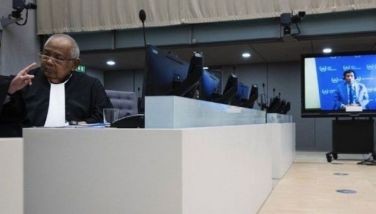Aim High Pasay
There are many assumptions as to the origin of the name Pasay. According to one account, Pasay originated during the reign of Rajah Soliman, the last native ruler of Maynilad, a Muslim kingdom on the southern delta of the Pasig River. It is said that he married a Sumatran princess who bore him a son and a daughter — Prince Sowaboy and Princess Pasay. Before his death, Rajah Soliman divided his kingdom to his two heirs and the half that went to the princess was named Pasay.
Another account states that name of the municipality came from the wail of a heartbroken lover. Jose and Paz were deeply in love and were planning to get married, but Jose came from a poor family. His father was but a mere tenant of the hacienda of Paz’s father. Because of this, Jose was ordered to stay away from Paz. Overcome by grief, Paz died. At her funeral, the elite came to mourn and pray as Jose watched from afar. As soon as everyone was gone, Jose dug a tunnel into the earth to be with Paz. Once joined, he let out a sharp and anguished cry “Paz-ay!” In sorrow and regret, Paz’s parents named their hacienda Paz-ay. As time passed, the town came to be known as Pasay.
Still another account has it that Pasay was named after a princess of the Namayan Kingdom, Dayang-dayang Pasay. The Namayan Kingdom was a confederation of barangays that began to peak in 1175 and extended from Manila Bay to Laguna de Bay. Dayang-dayang Pasay inherited the lands comprising the territories of Culi-culi, Pasay and Baclaran.
Pasay was originally a barrio of Maasim (Sour). In 1727, Pasay was previously attached to Sta. Ana and annexed to Malate. Even during that time, the economy of the town was good. Farming was an important livelihood in the barrios of San Isidro, San Roque and Malibay. Because of its proximity to Manila Bay, fishing also was a significant source of revenue for the people. Manila Bay’s waters were clean and crystal clear, very conducive for different types of marine life. Even before the war, I can remember when people would say “let’s go to Pasay,” what they really meant was “we’re going to Pasay to swim.”
The people of Pasay, led by its elite class clamored for separation and petitioned authorities that they be granted the opportunity to govern themselves. On December 2, 1863, the petition was granted through the recommendation of Archbishop Gregorio Meliton, effectively making Pasay independent. The town’s economy steadily improved over the years, until its revenues exceeded the limit set for an ordinary town, and so on August 16, 1947, it became a city and named after our national hero, Dr. Jose Rizal. In June 7, 1950, by virtue of Republic Act 183, it was changed back to Pasay City.
Today, Pasay is still as progressive as it was many decades ago. Although it is the third smallest city in the National Capital region, Pasay has long been a great earner for Metropolitan Manila. It is an established center for culture and the arts. Found here is the CCP (Cultural Center of the Philippines) Complex, on which the main CCP building, PICC (Philippine International Convention Center), Folk Arts Theater, Manila Film Center, Coconut Palace, Design Center of the Philippines and Philippine Trade Training Center are located. Many government offices, like the Department of Foreign Affairs (DFA), Philippine National Bank, Overseas Workers Welfare Administration (OWWA), Senate of the Philippines and the Government Service Insurance System (GSIS), are also located here.
Of course, Pasay is also home to the Villamor Air Base, the sprawling Manila Domestic Airport and Ninoy Aquino International Airport complexes; theme parks such as the Nayong Pilipino and Star City; and many big businesses like the SM Group of Companies, SM Mall of Asia and ASEANA Holdings, Inc., the company that is developing the stretch of land located along Diosdado Macapagal Avenue, where a chain of restaurants, coffee shops, clubs and condominiums are now sprouting. Plans are also in the works to include the booming call center industry, and the construction of hotels, an entertainment center and docking facilities for private yachts and cruise liners.
The Pasay City government is exerting great efforts to further develop the city and turn it into a prime business and tourist destination for Asia and the rest of the world. It is hard to believe that what once was only just a place to go for a swim has now become a prime business and residential district and a vital revenue earner for the Philippine government. On the occasion of the city’s 145th anniversary, we wish them congratulations. Continue to Aim High Pasay!
- Latest
- Trending



























